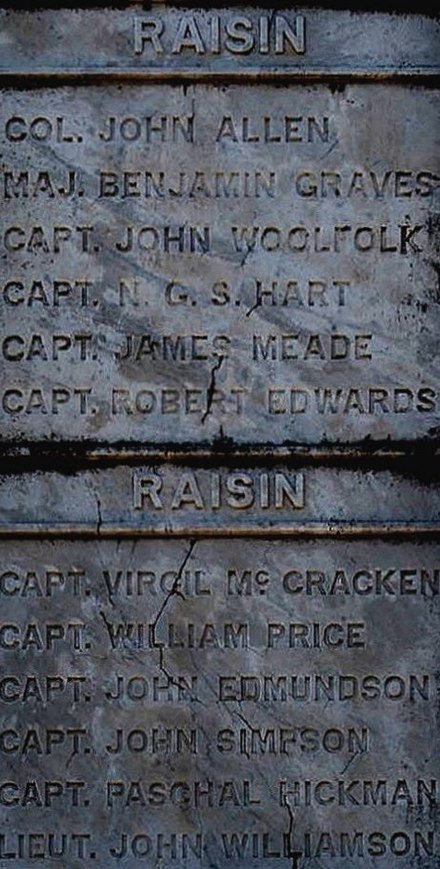
Shelby County is a county located in the U.S. state of Kentucky. As of the 2010 census, the population was 42,074. The county seat is Shelbyville. The county was founded in 1792 and named for Isaac Shelby, the first Governor of Kentucky. Shelby County is part of the Louisville/Jefferson County, KY–IN Metropolitan Statistical Area.
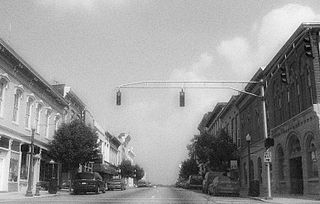
Shelbyville is a home rule-class city in and the county seat of Shelby County, Kentucky, United States. The population was 14,045 at the 2010 census.
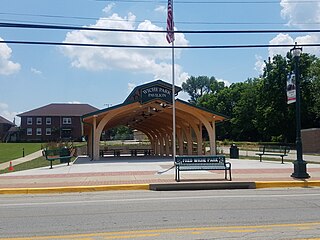
Simpsonville is a home rule-class city in Shelby County, Kentucky, in the United States. It is located 8 miles west of Shelbyville, Kentucky and 23 miles east of Louisville situated along U.S. 60. The population was 2,484 during the 2010 U.S. Census.
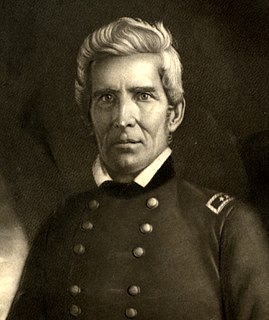
William Orlando Butler was a U.S. political figure and U.S. Army major general from Kentucky. He served as a Democratic congressman from Kentucky from 1839 to 1843, and was the Democratic vice-presidential nominee under Lewis Cass in 1848.
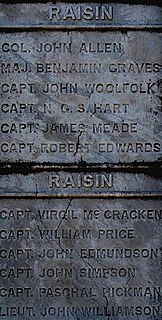
John Allen was a United States politician and army officer who was killed in the War of 1812.

Solomon Porcius Sharp was an American attorney and politician, serving as attorney general of Kentucky and a member of the United States Congress and the Kentucky General Assembly. His murder by Jereboam O. Beauchamp in 1825 is referred to as the Beauchamp–Sharp Tragedy or "The Kentucky Tragedy."

John Adair was an American pioneer, soldier, and politician. He was the eighth Governor of Kentucky and represented the state in both the U.S. House and Senate. A native of South Carolina, Adair enlisted in the state militia and served in the Revolutionary War, during which he was twice captured and held as a prisoner of war by the British. Following the War, he was elected as a delegate to South Carolina's convention to ratify the United States Constitution.

George Madison was the sixth Governor of Kentucky. He was the first governor of Kentucky to die in office, serving only a few weeks in 1816. Little is known of Madison's early life. He was a member of the influential Madison family of Virginia, and was a second cousin to President James Madison. He served with distinction in three wars – the Revolutionary War, Northwest Indian War, and War of 1812. He was twice wounded in the Northwest Indian War, and in the War of 1812 he was taken prisoner following the Battle of Frenchtown in Michigan.
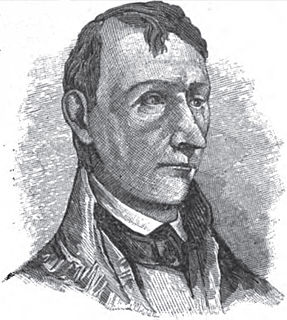
Bland Ballard was a soldier and statesman from Kentucky.

William Logan was a United States Senator from Kentucky.

Martin D. Hardin was a politician and lawyer from Kentucky. Born in Pennsylvania, his family immigrated to Kentucky when he was still young. He studied law under George Nicholas and commenced practice at Richmond, Kentucky. His cousin, future U.S. Representative Benjamin Hardin, studied in his law office. He represented Madison County in the Kentucky House of Representatives for a single term.
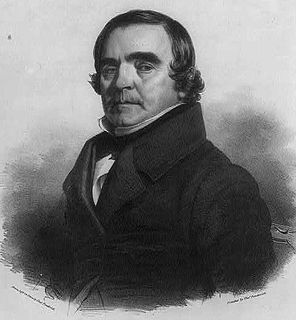
Robert Carter Nicholas was a United States Senator from Louisiana. He was a veteran of the War of 1812, and also served as Secretary of State of Louisiana and Louisiana's Superintendent of Education.

The Frankfort Cemetery is a historic rural cemetery located on East Main Street in Frankfort, Kentucky. The cemetery is the supposed burial site of Daniel Boone and contains the graves of other famous Americans including seventeen Kentucky governors and a Vice President of the United States.
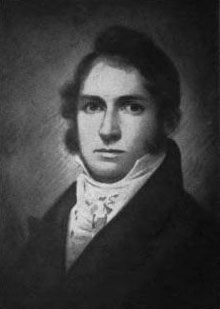
Alney McLean was a United States Representative from Kentucky. McLean County, Kentucky, is named in his honor.

Colonel Charles Stewart Todd was an American military officer and government official.

Paschal Hickman was an American military officer who was killed in the Massacre of the River Raisin, an important event in the War of 1812. Hickman County, Kentucky is named for him.
During the War of 1812, Kentucky supplied numerous troops and supplies to the war effort. Because Kentucky did not have to commit manpower to defending fortifications, most Kentucky troops campaigned actively against the enemy. This led to Kentucky seeing more battle casualties than all other states combined.
Nathaniel Gray Smith Hart was a Lexington, Kentucky lawyer and businessman, who served with the state's volunteer militia during the War of 1812. As Captain of the Lexington Light Infantry from Kentucky, Hart and many of his men were killed in the River Raisin Massacre of January 23, 1813, after being taken prisoner the day before following the Battle of Frenchtown in Michigan Territory.
Benjamin Franklin Graves (1771–1813) was a politician and military leader in early 19th-century Kentucky. During the War of 1812, Graves served as a major in the 2nd Battalion, 5th Kentucky Volunteer regiment. Together with other officers, he commanded Kentucky troops in the Battle of Frenchtown on January 22, 1813, in Michigan Territory. This was part of an effort by Americans to take the British-controlled fort at Detroit, Fort Shelby. This battle had the highest number of American fatalities in the war: of 1,000 American troops, nearly 400 were killed in the conflict, and 547 were taken prisoner. The next day an estimated 30-100 Americans were killed by Native Americans after having surrendered.
Anthony Butler (1787–1849) was an American soldier, politician and diplomat who served as Chargé d'Affaires to Mexico.
